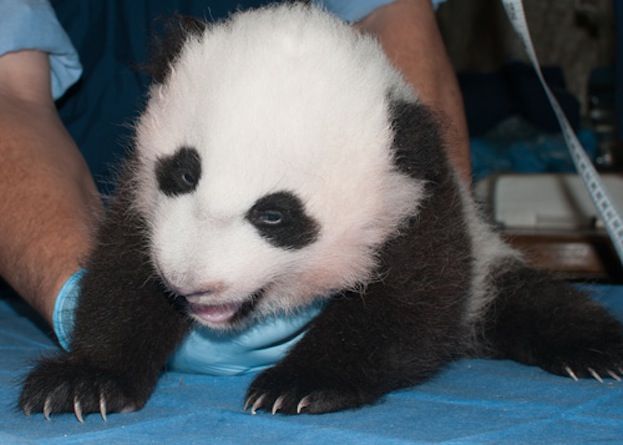Votes Wanted to Name Baby Panda

It's almost time to name the newborn giant panda at the Smithsonian's National Zoo in Washington, D.C., and keepers want the public to weigh in on five possible monikers, including Bao Bao and Mulan.
All pandas in U.S. zoos belong to China — the only place in the world where the rare bears remain in the wild. In keeping with Chinese tradition, pandas born in captivity are not named until they are 100 days old.
The National Zoo's panda mom Mei Xiang gave birth to a female cub on Aug. 23. As of the baby panda's latest exam on Oct. 30, the cub weighs 7.7 pounds (3.5 kilograms) and measures 23 inches long (59 centimeters).
Here are the five candidates for the panda's Mandarin Chinese name with their meanings:
- Bao Bao: precious, treasure.
- Ling Hua: darling, delicate flower.
- Long Yun: Long is the Chinese symbol of the dragon, while Yun means charming. Combined this represents a sign of luck for panda cooperation between China and the U.S.
- Mulan: a legendary young woman and brave Chinese warrior from the fifth century; it also means magnolia flower in Chinese.
- Zhen Bao: treasure, valuable.
You can vote for your favorite here: http://www.smithsonianmag.com/specialreports/name-the-panda/
The poll will end on Nov. 22 and the winning name will be revealed in a ceremony on Dec. 1, National Zoo officials said.
Two pandas born this year in the United States have already received names. Zoo Atlanta's adult female Lun Lun gave birth to a set of male twins in July. After a public vote, the brothers last month were named Mei Lun (may loon) and Mei Huan (may hwaan), which originate from a Chinese idiom that translates to "something indescribably beautiful and magnificent."
Sign up for the Live Science daily newsletter now
Get the world’s most fascinating discoveries delivered straight to your inbox.
The twins, as well as Mei Xiang's cub, were the products of artificial insemination, a technique commonly used in captive breeding since it can be difficult to get giant panda couples to mate naturally.
Follow Megan Gannon on Twitter and Google+. Follow us @livescience, Facebook & Google+. Original article on LiveScience.











